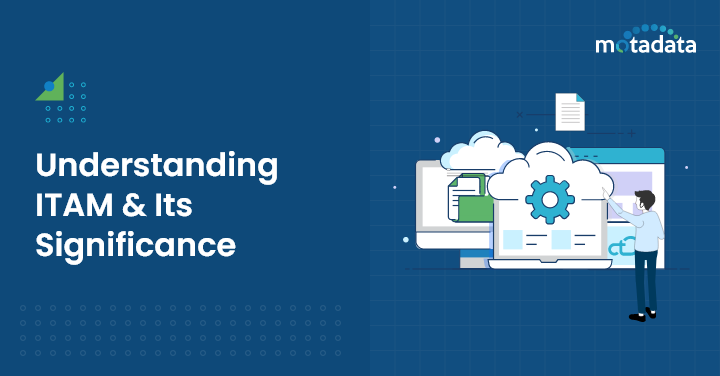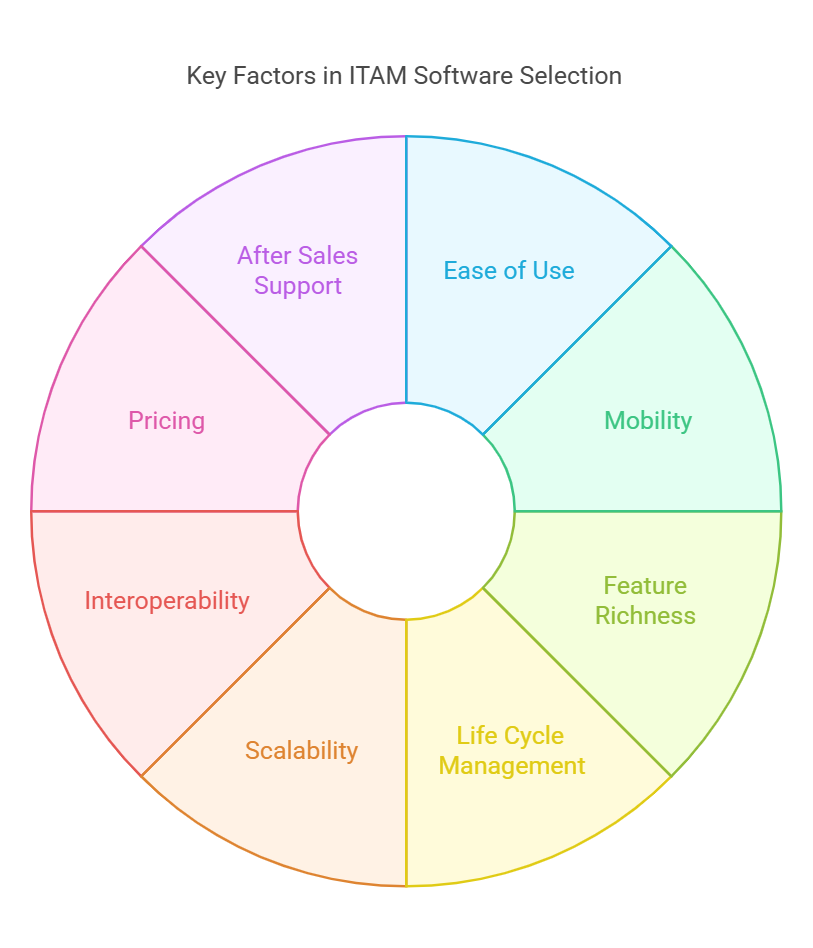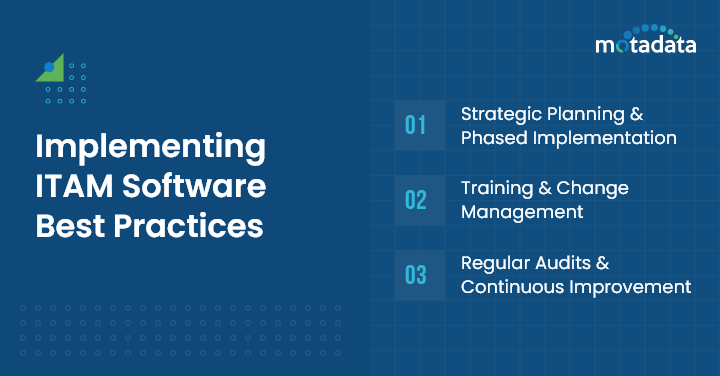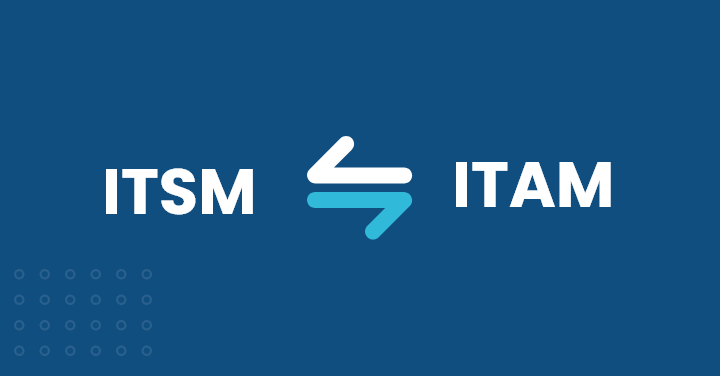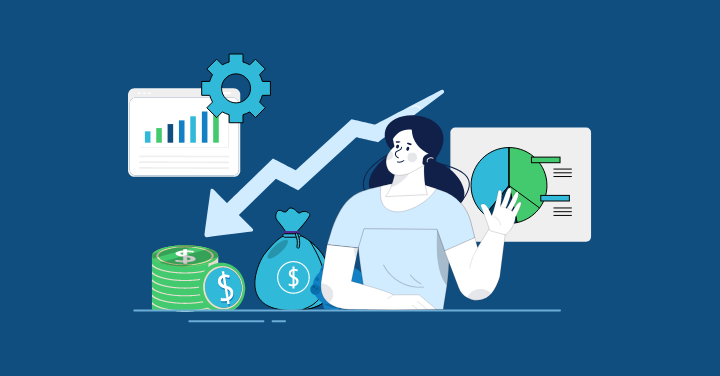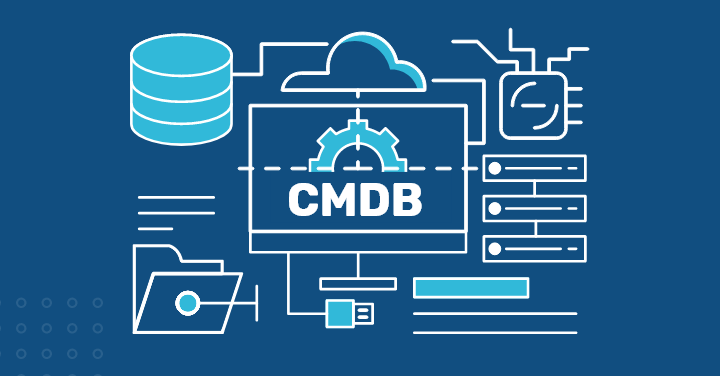In the fast-paced realm of IT asset management (ITAM), selecting the right software isn’t just a task—it’s a pivotal decision that can shape the efficiency and effectiveness of your organization’s IT operations.
This comprehensive guide dives deep into the crucial aspects of choosing the ideal ITAM software for your business needs.
With the advent of new technology the number of devices and the software’s installed in it, have manifold by leaps and bounds.
There is a dire need of an ITAM software by every organization, which is further validated by gartner.
On average, it is estimated that 30% of companies are in a chaotic state of not knowing the different assets they own, their location, and who is using them.
Several large companies have hundreds and thousands of assets spread across geographically distributed locations.
Keeping up-to-date information of both IT Hardware and Software is not only time consuming, but frustrating and costly as well.
Lack of a proper Asset Management, leads to limited asset visibility, painful compliance audits and long fulfillment cycle resulting in unnecessary delays and heavy losses.
As modern day organizations solely rely on their digital infrastructure for most of their IT operations & services, which majorly run on various IT assets; managing an asset poses a major challenge from a management, cost, and risk perspective.
With wasted or unmanaged IT resources or inventory comes limited visibility, painful compliance audits, unaccountability, and long fulfillment time or IT service delays for enterprises not having an IT Asset Management capability.
Understanding ITAM and Its Significance
ITAM, short for IT Asset Management, is the systematic approach to managing, deploying, maintaining, upgrading, and disposing of IT assets in an effective manner.
In today’s digital era, ITAM isn’t merely an option; it’s a necessity for ensuring seamless operation and maximizing ROI on IT investments.
Initial Considerations: Laying the Groundwork for Your Choice
Pause for a moment, let’s not dive headfirst into the intricate world of ITAM software features just yet.
It’s pivotal to first grasp what your organization genuinely necessitates.
Picture this: when embarking on a grocery shopping expedition, one doesn’t aimlessly roam the aisles, indiscriminately grabbing items.
Instead, you strategize with a list in hand, correct?
Embark on a thorough examination of your current IT landscape. Assess what aspects are thriving and which ones are faltering.
How robust is your technology stack in its current form? Consider this a ‘state of the union’ address for your IT infrastructure.
Following this, it’s essential to envelop your understanding around the life cycle of your assets.
This journey isn’t merely about the acquisition or installation phase; it encompasses the entire saga – from the moment these assets debut in your office until their final farewell.
And let’s not sideline the pivotal role of your team! Identify who will be interacting with this software on a daily basis.
Engage those who are directly involved with your assets. Their frontline experience harbors insights that are often elusive at higher levels.
By confronting these elements squarely, you’re elevating your choice beyond merely selecting a software off the shelf.
You’re investing in a solution that’s been intricately fashioned for the unique fabric of your business.
How ITAM Software Transforms Businesses
ITAM software has the power to transform businesses by providing comprehensive IT asset management capabilities.
The software enables organizations to gather and analyze asset data, leading to better decision-making and improved operational efficiency.
By centralizing asset data, ITAM software provides organizations with a holistic view of their IT infrastructure.
This comprehensive understanding allows businesses to make informed decisions regarding asset utilization, maintenance, and procurement.
With accurate and up-to-date asset information, organizations can optimize resource allocation, reduce costs, and maximize the value of their IT investments.
ITAM software also streamlines asset management processes, automating workflows and improving productivity.
It eliminates manual data entry, reduces errors, and provides real-time insights into asset performance and availability.
This enables organizations to proactively address issues, plan for future needs, and ensure seamless operations.
In summary, ITAM software transforms businesses by enabling comprehensive IT asset management, facilitating better decision-making, and enhancing operational efficiency.
Choosing the right IT Asset Management (ITAM) Software
Hence a right ITAM software can not only save billions, but also lets you focus on tasks which are important.
Today, let’s evaluate parameters to be kept in mind before selecting a right IT Asset Management (ITAM) Software from a plethora of options available in the market.
1. Ease-of Use
Always prefer a software that is easy to configure and use for different sets of people from various departments.
User-friendly GUI is one of the key factors in making the tool successful and acceptable across the organization.
As getting used to the software is not only time consuming but is also costly.
Hence it is advisable to try the software before it is actually procured.
2. Mobility
A must have feature is the mobile app, where you can retrieve and update information on-the-go.
Mobile app eliminates the need to carry laptop on-site and offers you the flexibility to scan the data and upload the same easily.
3. Feature Rich
This is one of the most important aspect in the selection criteria, which should be in line with what you intend to do with the software as it will make your team’s job easier.
It should offer both basic features such as inventory management, auto asset discovery, CMDB to advanced features such as vulnerability assessment and patch update alerts.
The software should also cater to the future requirements and the roadmap should be clearly understood.
4. End-to-end Life Cycle Management
The software should assist the IT Teams in managing end-to-end Asset Life Cycle Management from planning, procurement, discovery, tracking, configuration, maintenance, deployment, up-grade to disposing of the IT administered assets in a systematic way.
5. High Scalability
In the beginning of the blog we made it very clear, the plethora of devices that we use today – have manifold and hence a solution that scales as per organization needs become all together even more important.
Moreover, since IoT is gaining traction software vendors would have to manage new breeds of assets such as sensors which are set to grow exponentially.
6. Interoperability
The ITAM Software should be able to easily integrate with 3rd party vendors such as ERP System, ITSM, NMS etc.
over open API’s; so as to ensure that the existing investment made in various systems are utilized effectively even after a new system has been introduced.
7. Pricing – part of ITSM
Again, one of the key factors which can be a deal breaker. Estimate the benefits in comparison to what you pay in order to procure the software.
The best asset management solution offers pricing plans that scale up with the added value they provide, for example, number of assets or users or features.
Moreover, organizations that require an asset management software would always require an ITSM solution and hence it is always better that the service desk software that you subscribe already have the asset management module built-in, which would be much more cost effective than investing in a standalone solution.
8. After Sales Support
Even though it should be given high priority and due consideration of what type of support is included in the proposed plan.
The cost and quality vary as per the proposed plan, which can be delivered through any or all of the mediums stated, i.e., ticketing system, email, phone call, or chat.
Evaluating the right asset management software on above parameters from various vendors could be quite cumbersome, but in the long run it will surely pay off.
One such asset management software that fulfills all the criteria listed above is Motadata. It lets you operate, maintain, deploy, up-grade and dispose of IT assets in a systematic way.
Turn IT teams more productive by offering them greater visibility and control over both hardware and software assets, that enables them to fight day-to-day IT issues and problems, that helps in minimizing downtime that impact businesses.
Moreover, it keeps a track of every asset to ensure employees are equipped with the tools required to get the job done.
Implementing ITAM Software: Best Practices
Strategic Planning and Phased Implementation
Approach implementation with a strategic plan and consider a phased rollout to ensure smooth adoption.
Training and Change Management
Invest in training and change management to facilitate user adoption and maximize the software’s potential.
Regular Audits and Continuous Improvement
Conduct regular audits to assess the effectiveness of the ITAM software and identify areas for improvement.
FAQs:
ITAM improves asset visibility, helps optimize resource allocation, ensures compliance with licensing, and reduces costs by managing asset usage efficiently.
ITAM software tracks software licenses and hardware assets, ensuring that the organization remains compliant with licensing agreements and avoids penalties.
ITAM software tracks assets from procurement to disposal, helping organizations manage upgrades, maintenance, and decommissioning effectively.


